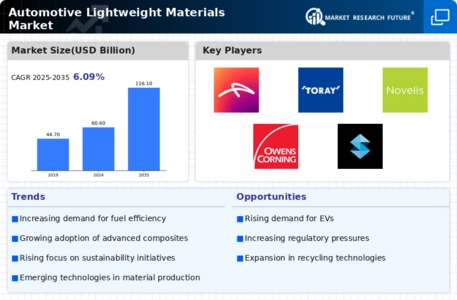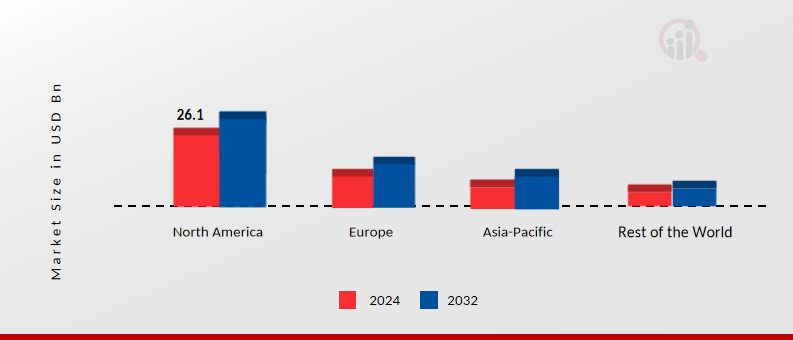-
Research Methodology
-
Scope of the Study
- Research Objective
- Limitations
- Primary Research
-
2.1.1
-
Definition
-
2.1.3
-
Assumptions
-
2.2
-
Research Process
-
2.2.2
-
Secondary Research
-
Market size Estimation
-
Forecast Model
-
3
-
Market Dynamics
-
Market Drivers
-
Market Inhibitors
-
3.3
-
Supply/Value Chain Analysis
-
Porter’s Five Forces Analysis
-
4
-
Global Automotive lightweight materials market, By Material
-
Introduction
-
4.2
-
Metal
-
Rubber
-
Plastic
-
Others
-
5
-
Global Automotive lightweight materials market, By Applications
-
5.1
-
Introduction
-
Interior
-
Exterior
-
5.4
-
Structural
-
Others
-
Global Automotive lightweight materials market,
-
By Vehicle type
-
Introduction
-
Heavy commercial
-
vehicles
-
Light commercial vehicles
-
Passenger vehicles
-
6.5
-
Others
-
Regional Market Analysis
-
7.1
-
Introduction
-
North America
- U.S.
- Canada
-
Europe
- France
- Germany
- Spain
- Rest of Europe
- China
- Japan
- India
- Rest
-
7.3.1
-
U.K
-
7.4
-
Asia-Pacific
-
of Asia-Pacific
-
Rest of the World
-
8
-
Competitive Analysis
-
Introduction
-
Competitive
- Market Share Analysis
- Market
- Material/Service Benchmarking
- Overview
- Material/Service
- Strategy
-
Scenario
-
Development Analysis
-
8.3
-
Alcoa Inc., (U.S.)
-
Offering
-
Toray
- Overview
- Material/Service
- Strategy
-
Industries (Japan)
-
Offering
-
ArcelorMittal
- Overview
- Material/Service
- Strategy
-
S.A. (Luxembourg)
-
Offering
-
ThyssenKrupp
- Overview
- Material/Service
- Strategy
-
AG (Germany)
-
Offering
-
BASF SE
- Overview
- Material/Service
- Strategy
-
(Germany)
-
Offering
-
PPG Industries,
- Overview
- Material/Service
- Strategy
-
Inc (U.S.)
-
Offering
-
Covestro
- Overview
- Material/Service
- Strategy
-
AG (Germany)
-
Offering
-
Owens Corning
- Overview
- Material/Service
- Strategy
-
(U.S.)
-
Offering
-
Lyondellbasell
- Overview
- Material/Service
- Strategy
-
N.V. (U.S.)
-
Offering
-
Novelis
- Overview
- Material/Service
- Strategy
-
.Inc.,(U.S.)
-
Offering
-
LIST OF TABLES
-
GLOBAL
-
AUTOMOTIVE LIGHTWEIGHT MATERIALS MARKET, BY MATERIAL
-
GLOBAL AUTOMOTIVE LIGHTWEIGHT
-
MATERIALS MARKET, BY APPLICATIONS
-
GLOBAL AUTOMOTIVE LIGHTWEIGHT MATERIALS
-
MARKET, BY VEHICLE TYPE
-
GLOBAL AUTOMOTIVE LIGHTWEIGHT MATERIALS
-
MARKET, BY REGIONS
-
NORTH AMERICA AUTOMOTIVE LIGHTWEIGHT MATERIALS MARKET,
-
BY MATERIAL
-
NORTH AMERICA AUTOMOTIVE LIGHTWEIGHT MATERIALS MARKET,
-
BY APPLICATIONS
-
NORTH AMERICA AUTOMOTIVE LIGHTWEIGHT MATERIALS MARKET,
-
BY VEHICLE TYPE
-
U.S. AUTOMOTIVE LIGHTWEIGHT MATERIALS MARKET, BY MATERIAL
-
TABLE
-
U.S. AUTOMOTIVE LIGHTWEIGHT MATERIALS MARKET, BY APPLICATIONS
-
U.S.
-
AUTOMOTIVE LIGHTWEIGHT MATERIALS MARKET, BY VEHICLE TYPE
-
CANADA AUTOMOTIVE LIGHTWEIGHT
-
MATERIALS MARKET, BY MATERIAL
-
CANADA AUTOMOTIVE LIGHTWEIGHT MATERIALS
-
MARKET, BY APPLICATIONS
-
CANADA AUTOMOTIVE LIGHTWEIGHT MATERIALS
-
MARKET, BY VEHICLE TYPE
-
EUROPE AUTOMOTIVE LIGHTWEIGHT MATERIALS
-
MARKET, BY MATERIAL
-
EUROPE AUTOMOTIVE LIGHTWEIGHT MATERIALS MARKET, BY
-
APPLICATIONS
-
EUROPE AUTOMOTIVE LIGHTWEIGHT MATERIALS MARKET, BY
-
VEHICLE TYPE
-
GERMANY AUTOMOTIVE LIGHTWEIGHT MATERIALS MARKET, BY
-
MATERIAL
-
GERMANY AUTOMOTIVE LIGHTWEIGHT MATERIALS MARKET, BY APPLICATIONS
-
TABLE
-
GERMANY AUTOMOTIVE LIGHTWEIGHT MATERIALS MARKET, BY VEHICLE TYPE
-
FRANCE
-
AUTOMOTIVE LIGHTWEIGHT MATERIALS MARKET, BY MATERIAL
-
FRANCE AUTOMOTIVE LIGHTWEIGHT
-
MATERIALS MARKET, BY APPLICATIONS
-
FRANCE AUTOMOTIVE LIGHTWEIGHT MATERIALS
-
MARKET, BY VEHICLE TYPE
-
U.K. AUTOMOTIVE LIGHTWEIGHT MATERIALS MARKET,
-
BY MATERIAL
-
U.K. AUTOMOTIVE LIGHTWEIGHT MATERIALS MARKET, BY APPLICATIONS
-
TABLE
-
U.K. AUTOMOTIVE LIGHTWEIGHT MATERIALS MARKET, BY VEHICLE TYPE
-
REST
-
OF EUROPE AUTOMOTIVE LIGHTWEIGHT MATERIALS MARKET, BY MATERIAL
-
REST
-
OF EUROPE AUTOMOTIVE LIGHTWEIGHT MATERIALS MARKET, BY APPLICATIONS
-
REST
-
OF EUROPE AUTOMOTIVE LIGHTWEIGHT MATERIALS MARKET, BY VEHICLE TYPE
-
ASIA-PACIFIC
-
AUTOMOTIVE LIGHTWEIGHT MATERIALS MARKET, BY MATERIAL
-
ASIA-PACIFIC AUTOMOTIVE
-
LIGHTWEIGHT MATERIALS MARKET, BY APPLICATIONS
-
ASIA-PACIFIC AUTOMOTIVE
-
LIGHTWEIGHT MATERIALS MARKET, BY VEHICLE TYPE
-
ROW AUTOMOTIVE LIGHTWEIGHT
-
MATERIALS MARKET, BY MATERIAL
-
ROW AUTOMOTIVE LIGHTWEIGHT MATERIALS MARKET,
-
BY APPLICATIONS
-
ROW AUTOMOTIVE LIGHTWEIGHT MATERIALS MARKET, BY VEHICLE
-
TYPE
-
LIST OF FIGURES
-
RESEARCH APPLICATIONS
-
FIGURE
-
GLOBAL AUTOMOTIVE LIGHTWEIGHT MATERIALS MARKET: BY MATERIAL (%)
-
GLOBAL
-
AUTOMOTIVE LIGHTWEIGHT MATERIALS MARKET: BY APPLICATIONS (%)
-
GLOBAL AUTOMOTIVE LIGHTWEIGHT
-
MATERIALS MARKET: BY VEHICLE TYPE (%)
-
GLOBAL AUTOMOTIVE LIGHTWEIGHT
-
MATERIALS MARKET: BY REGION
-
NORTH AMERICA AUTOMOTIVE LIGHTWEIGHT MATERIALS
-
MARKET, BY MATERIAL (%)
-
NORTH AMERICA AUTOMOTIVE LIGHTWEIGHT MATERIALS
-
MARKET, BY APPLICATIONS (%)
-
NORTH AMERICA AUTOMOTIVE LIGHTWEIGHT MATERIALS
-
MARKET, BY VEHICLE TYPE (%)
-
EUROPE AUTOMOTIVE LIGHTWEIGHT MATERIALS
-
MARKET, BY MATERIAL (%)
-
EUROPE AUTOMOTIVE LIGHTWEIGHT MATERIALS
-
MARKET, BY APPLICATIONS (%)
-
EUROPE AUTOMOTIVE LIGHTWEIGHT MATERIALS
-
MARKET, BY VEHICLE TYPE (%)
-
ASIA-PACIFIC AUTOMOTIVE LIGHTWEIGHT MATERIALS
-
MARKET, BY MATERIAL (%)
-
ASIA-PACIFIC AUTOMOTIVE LIGHTWEIGHT MATERIALS
-
MARKET, BY APPLICATIONS (%)
-
ASIA-PACIFIC AUTOMOTIVE LIGHTWEIGHT MATERIALS
-
MARKET, BY VEHICLE TYPE (%)
-
ROW AUTOMOTIVE LIGHTWEIGHT MATERIALS MARKET,
-
BY MATERIAL (%)
-
ROW AUTOMOTIVE LIGHTWEIGHT MATERIALS MARKET, BY APPLICATIONS
-
(%)
-
ROW AUTOMOTIVE LIGHTWEIGHT MATERIALS MARKET, BY VEHICLE TYPE
-
(%)










Leave a Comment